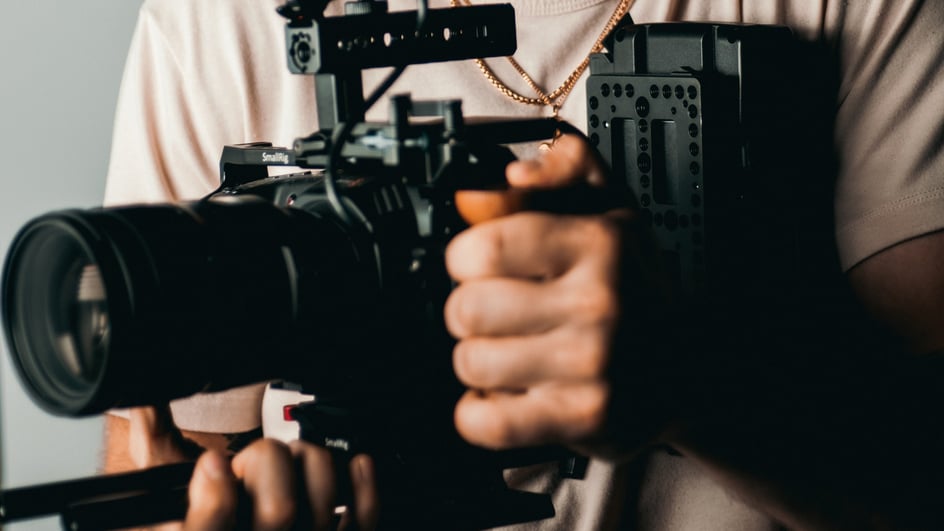
Dec 3, 2020
Long before picking up their gear, videographers scout the best filming locations and invest hours into strategizing for a project. Copious amounts of time are devoted to piecing a project together — even before filming begins.
Whether filming is scheduled for one day or several months, the footage that creators are able to capture directly impacts the process moving forward. For short and long form projects alike, the more shots logged during filming, the better.
By the time you transition into post-production, you’re essentially sculptors preparing to chip away at a massive block of marble.
An abundance of material — the RAW footage — works to your benefit here. Or so you remind yourself as you stare wide-eyed at the imported media files in your editing software.
In order to produce a final project that you’re pleased with, it’s important to filter through the unedited source footage to isolate which shots you want to keep. This process is as necessary as it is time-consuming.
When editing, it’s likely that you will adjust your initial post-production plans in some way. Maybe the shot you wanted to include doesn’t work, so you integrate stock video instead. Maybe the video templates created an unexpected effect, and you ran with it.
At the close of a project, you’re left with unused raw footage and the potential to create something new.
To give you a better idea of what this might look like, this article breaks down three practical ways to salvage and repurpose raw footage.
Post-Production Cuts
There isn’t a fixed parameter for how much raw footage is needed for a project, but it’s usually more than you think.
Even if a video is slated to be ten minutes long, you might go into post-production with an hour of raw footage. If you only have fifteen or twenty minutes of video, the window for making edits is extremely narrow.
More footage translates into more freedom and flexibility for making cuts and adjusting the content to a set time frame.
During post-production, you may edit down some clips and leave other media files completely untouched. While excess footage is beneficial during the editing process, the raw footage that you don’t use can add up quickly.
After investing so much time in the production process, the thought of wasting all of that footage probably doesn’t sit right with you. And we completely get that.
If you’re looking to put leftover footage to use, there are a few approaches you can take.
Reimagining Unused Raw Footage
1. Package Raw Footage for a Client
When working with clients, there’s always the possibility that someone will ask for access to the raw footage from a shoot.
This can be quite common for wedding videographers. A client may be thrilled with the final curated project but still show interest in the unedited coverage of the ceremony. For the client, the unused footage in your computer’s hard drive is another valuable record of the special event.
In circumstances like this, it could benefit both parties to offer a package for the unused raw footage. Clients have the option to purchase the video clips in bulk, and you don’t have to delete all of the excess content.
On the other hand, packaging unused raw footage can be a point of contention among some creators. This is because giving someone else your raw footage means that you’re essentially releasing creative control over the video.
Even still, creating a raw footage package is a direct and effective way to ensure that your hard work isn’t wasted.
2. Turn Raw Footage Into Stock Video
Creators bring an artistic vision into reality with stock video. A few choice edits later, and creators can integrate stock video into a personal or commercial video by matching the color grading, exposure, and resolution.
Especially when working with budget and time constraints, finding the right stock footage simplifies post-production. In times when logistical issues occur it’s critical that you adapt quickly.
To put this in context, let’s say that you intend to capture a specific aerial shot during a shoot. You arrive on location with the proper gear only to discover that there’s an issue with the camera’s operation. With limited time for filming, you decide to move forward so that you can capture other necessary shots.
In this scenario, you adapt quickly knowing that you can find aerial stock footage of a similar location.
Outsourcing stock footage is extremely beneficial and effective. But to save yourself more time and money, you can build up your own personal library of stock footage from unused raw video.
Each project that you take on will yield more raw material that — if unused — can come in handy when producing future videos or films.
3. Repurpose The Footage
Repurposing raw footage can look different in practice from creator-to-creator. Making your own stock video is one, but not the only, approach.
Let’s say you’ve wrapped post-production for an independent film. The remaining raw footage is usable, even though it didn’t make the final cut for this particular project. Think of this as an opportunity to exercise your creativity in ways you might not have otherwise.
Maybe there’s potential to integrate unused raw footage in a trailer for your indie film or even apply the untouched b-roll footage into a different project you’re working on.
Or alternatively, you might create an educational video for a different platform — like YouTube or MasterClass — to guide others through the filming process.
Choosing the Raw Footage to Reuse
Despite best efforts, not all raw footage is salvageable. Creators can experiment with different editorial solutions but still not see significant progress if a shot is too distorted or blurred.
Videographers, filmmakers, and other creators commit to the creative process at every phase and in spite of every complication. An audience is privy to the condensed version of your work — and may overlook the hours spent producing and curating raw footage as a result.
Nevertheless, producing video or film from start to finish is an incredible feat. If you are able to do so, repurposing unused raw footage can propel you from one project into the next.

